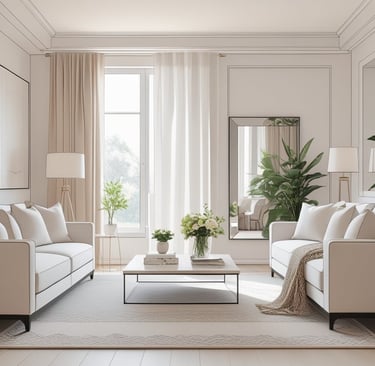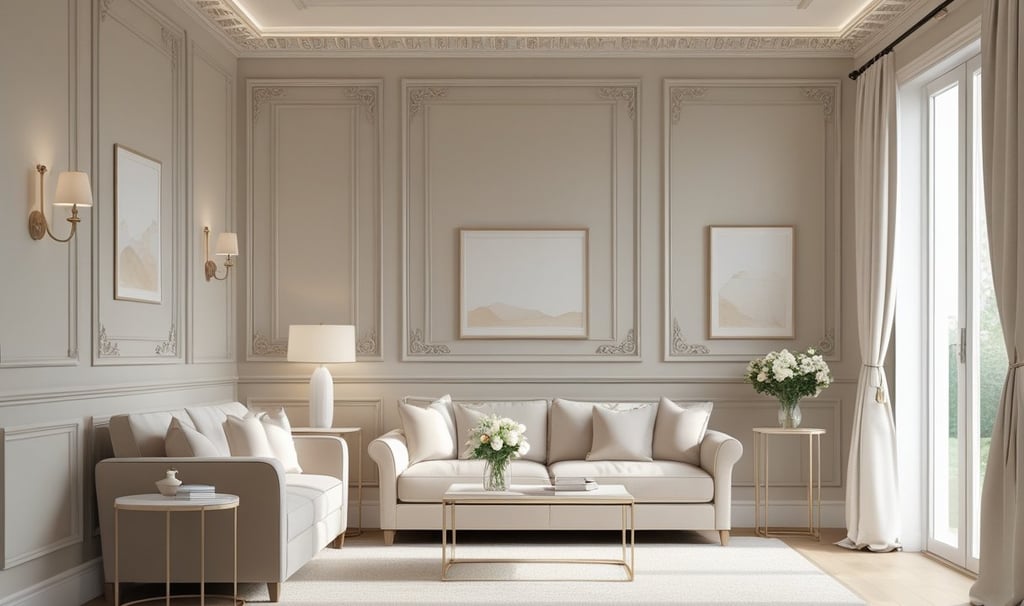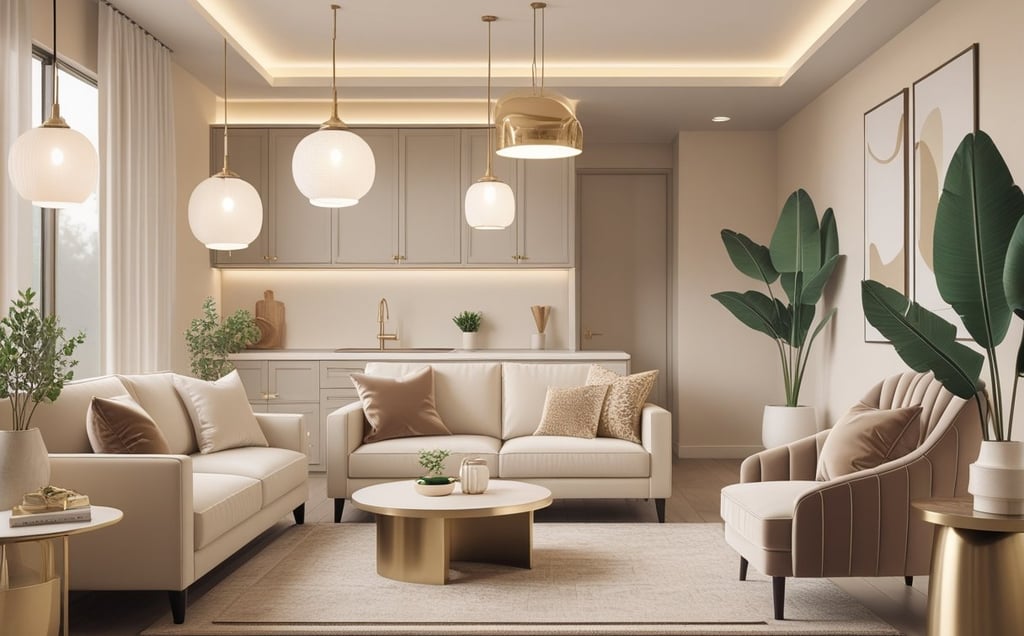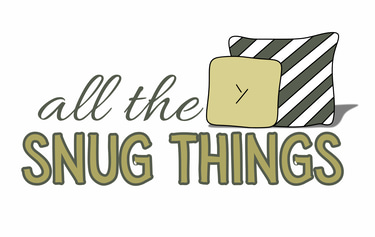How to Make Your Home Look Expensive on a Budget
Expert Designer Strategies That Actually Work
5/8/20248 min read
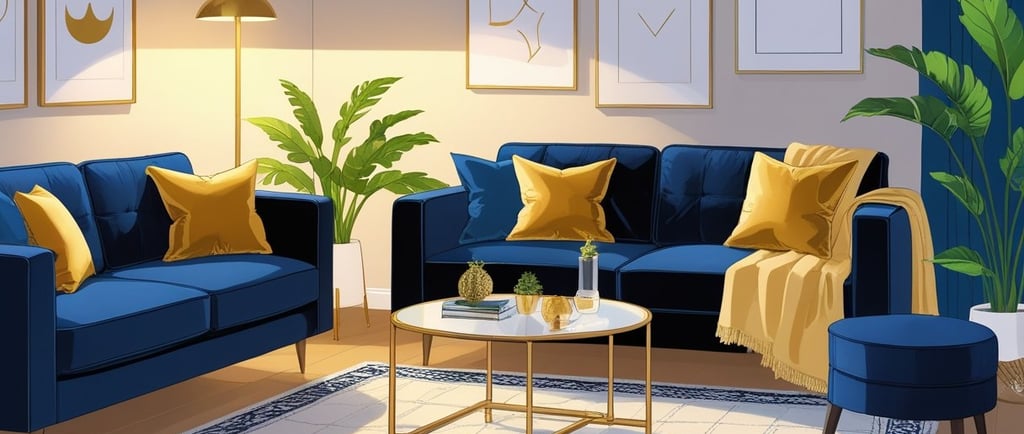

Creating a high-end appearance in your home doesn't require a luxury budget or extensive renovations. Smart design choices, strategic upgrades, and careful attention to details can transform any space into one that looks professionally designed and expensive. The key lies in understanding which elements make the biggest visual impact for the least financial investment.
Many homeowners believe that achieving an upscale look means purchasing expensive furniture or hiring professional designers. The reality is that simple changes like improving lighting, updating hardware, and creating cohesive color schemes can dramatically elevate a room's appearance. These affordable modifications focus on the foundational elements that interior designers use to create polished, intentional spaces.
The most effective approach involves layering small improvements that work together to create an overall impression of quality and sophistication. By prioritizing upgrades that offer maximum visual impact, homeowners can achieve results that rival professionally decorated spaces while staying within modest budgets.
Key Takeaways
Strategic lighting improvements and quality hardware updates create the biggest visual impact for minimal cost
Cohesive design principles like consistent color palettes and proper proportions make spaces appear professionally decorated
Small architectural details and finishing touches like window treatments elevate the overall appearance more than expensive furniture
Fundamental Design Principles for an Expensive Look
Professional designers rely on three core principles to create sophisticated interiors that appear costly regardless of budget. These fundamentals involve strategic color coordination, intentional room anchoring, and careful balance of visual elements.
Curating a Cohesive Color Palette
A well-planned color palette serves as the foundation for any expensive-looking space. Designers typically select 2-3 main colors and use them consistently throughout the home.
Neutral bases like cream, gray, or soft white create timeless elegance. These colors provide a sophisticated backdrop that won't date quickly.
Accent colors should appear in multiple rooms to create flow and intentionality. A deep navy pillow in the living room might echo in bedroom artwork or bathroom towels.
The 60-30-10 rule works effectively for color distribution:
60% dominant neutral color
30% secondary supporting color
10% bold accent color
Expensive homes avoid using too many competing colors in one space. Three colors maximum per room prevents visual chaos and maintains sophistication.
Consider undertones when selecting paint and fabrics. Cool grays pair with other cool tones, while warm beiges complement warm accent colors.
Establishing a Focal Point in Each Room
Every expensive-looking room needs one primary focal point that draws the eye immediately upon entering. This creates visual hierarchy and prevents spaces from appearing scattered.
Natural focal points include fireplaces, large windows, or built-in features. These elements should be enhanced rather than competing with additional focal points.
In rooms without natural anchors, create focal points through:
Large-scale artwork above sofas or beds
Statement lighting fixtures in dining areas
Accent walls with bold paint or wallpaper
Oversized mirrors that reflect light
The focal point should be proportional to the room size. A small painting above a king bed looks unfinished, while an oversized chandelier overwhelms a compact dining space.
Position furniture to support the focal point rather than ignore it. Seating should face toward fireplaces or entertainment centers, not away from them.
Balancing Pattern, Texture, and Scale
Sophisticated rooms layer different textures and patterns without creating visual noise. This balance distinguishes expensive-looking spaces from amateur decorating attempts.
Texture adds depth through materials like linen, wool, metal, and wood. Smooth leather chairs pair well with nubby throw pillows and polished coffee tables.
Pattern mixing requires careful proportion control. Use one large-scale pattern, one medium pattern, and one small pattern maximum per room.
Scale variation prevents monotony in furniture and decor selection. Pair a large sectional with smaller side tables, or balance tall floor lamps with low ottomans.
Expensive rooms include both matte and glossy finishes. Combine flat paint walls with shiny ceramic vases, or pair brushed metal hardware with polished marble counters.
Avoid matching everything perfectly. Sets of identical furniture appear mass-produced rather than carefully curated over time.
Elevating Walls and Architectural Details on a Budget
Strategic wall treatments and architectural elements can transform basic rooms into sophisticated spaces. Simple additions like wallpaper, paneling, and trim create visual interest and perceived value without major renovations.
Enhancing Walls with Wallpaper and Paneling
Removable wallpaper offers an affordable way to add luxury without permanent commitment. Peel-and-stick options range from $20-50 per roll and require no special tools or adhesives.
Wood-look and marble patterns create expensive appearances at fraction of the cost. Accent walls maximize impact while minimizing expense by covering only one focal wall per room.
Wood paneling alternatives include thin veneer sheets or paintable MDF panels. These materials cost $15-30 per panel compared to $100+ for solid wood options.
Material Cost per sq ft Installation Best Use Peel-stick wallpaper $1-3 DIY Accent walls MDF paneling $2-4 Moderate DIY Full rooms Veneer sheets $3-6 Advanced DIY Feature walls
Board and batten effects can be achieved with thin strips of wood or even painter's tape for temporary solutions.
Incorporating Molding, Trim, and Wainscoting
Crown molding instantly elevates ceiling height perception and adds architectural sophistication. Basic polyurethane molding costs $2-5 per linear foot compared to $15+ for hardwood versions.
Chair rail molding divides walls horizontally and creates traditional elegance. Installation involves measuring 32-36 inches from floor and securing with finishing nails.
Wainscoting transforms plain walls into custom millwork appearances. Simple raised panel effects use flat boards with decorative strips attached on top.
Picture frame molding creates geometric wall patterns that mimic expensive built-ins. Standard trim pieces arrange in rectangular or square configurations for dramatic impact.
Baseboards upgraded from basic 3-inch to 5-6 inch profiles change room proportions significantly. Thicker baseboards suggest higher construction quality and custom craftsmanship.
Adding Texture with Beadboard
Beadboard paneling provides cottage-style charm at budget-friendly prices. Standard 4x8 sheets cost $25-40 each and cover substantial wall areas quickly.
Vertical installation makes ceilings appear higher while horizontal placement widens narrow spaces. Most beadboard comes pre-primed for immediate painting after installation.
Bathroom applications work especially well since beadboard handles moisture better than standard drywall. The material adds texture and visual weight that suggests custom renovation work.
Kitchen backsplashes benefit from beadboard's easy-clean surface and classic appearance. White or cream colors reflect light and brighten cooking areas effectively.
Partial wall coverage from floor to chair rail height creates wainscoting effects without full room commitment. This approach reduces material costs while maintaining design impact.
Affordable Upgrades to Lighting, Hardware, and Accessories
Strategic updates to lighting fixtures, cabinet hardware, and decorative accessories can instantly elevate a home's appearance without major renovation costs. These targeted improvements create visual impact while maintaining budget-friendly price points.
Choosing Statement Lighting and Chandeliers
Statement lighting serves as functional art that transforms ordinary rooms into sophisticated spaces. A well-chosen chandelier or pendant light becomes the focal point that draws attention upward and creates visual interest.
Modern chandeliers are available at various price points, with many affordable options under $200 at retailers like IKEA, Target, and Wayfair. Metal finishes like brushed gold, matte black, or antique brass add premium appeal without premium costs.
Size selection matters significantly. A chandelier should measure approximately 12 inches in diameter for every foot of room width. For dining rooms, the fixture should hang 30-36 inches above the table surface.
Pendant lights work effectively over kitchen islands or in entryways. Grouping multiple pendants at varying heights creates a custom designer look. Glass or fabric shades soften harsh lighting while adding texture and visual warmth to the space.
Upgrading Door Handles and Decorative Hardware
Cabinet hardware replacement offers one of the highest visual returns on investment for minimal cost. New handles and knobs instantly modernize kitchens and bathrooms while creating a cohesive, intentional design aesthetic.
Brass and matte black finishes currently dominate high-end design trends. These finishes coordinate well with various color schemes and architectural styles. Replacing basic chrome or builder-grade hardware with these premium-looking alternatives costs $50-150 for most kitchens.
Door handles throughout the home should match for consistency. Interior designers recommend choosing hardware that complements existing fixtures like faucets and light switches. Oversized cabinet pulls (5-6 inches) create a more substantial, expensive appearance than standard 3-inch options.
Hardware placement affects both function and appearance. Cabinet pulls should be mounted on the upper corner of doors and lower corner of drawers for optimal ergonomics and visual balance.
Refreshing Light Fixtures and Floor Lamps
Ceiling-mounted light fixtures significantly impact room ambiance and perceived value. Replacing basic builder-grade fixtures with designer-inspired alternatives costs $30-100 per room but delivers dramatic visual improvements.
Flush-mount fixtures work well in rooms with standard ceiling heights. Semi-flush options add dimension while maintaining clearance. Track lighting provides adjustable illumination for artwork or architectural features.
Floor lamps contribute both task lighting and decorative appeal. Arc floor lamps create sophisticated silhouettes and work well behind sofas or reading chairs. Tripod bases and natural materials like wood or marble add textural interest.
Layered lighting combinations enhance room functionality and atmosphere. Table lamps, floor lamps, and overhead fixtures should work together to eliminate harsh shadows and create warm, inviting environments that feel professionally designed.
Styling with Fresh Flowers for a Luxe Touch
Fresh flowers instantly elevate any space with natural beauty and sophisticated fragrance. Strategic flower placement creates the impression of regular maintenance and attention to detail that characterizes expensive homes.
White flowers like hydrangeas, roses, or peonies provide classic elegance that complements any color scheme. Single-variety arrangements appear more intentional and expensive than mixed bouquets. Grocery store flowers cost $10-20 but create the same visual impact as premium florist arrangements.
Vase selection affects the overall presentation significantly. Clear glass cylinders or ceramic vessels in neutral tones allow flowers to take center stage. Height variation between multiple vases creates dynamic displays on dining tables or console surfaces.
Fresh greenery alternatives like eucalyptus branches or flowering branches from the yard extend between flower purchases. These natural elements maintain the luxurious appearance while reducing ongoing costs. Strategic placement near entryways or on coffee tables maximizes visual impact for guests.
Finishing Touches: Window Treatments and Curb Appeal
Strategic window treatments create instant sophistication while simple exterior updates maximize first impressions. These affordable finishing touches deliver high-end aesthetics without major renovations.
Selecting High-Impact Window Treatments
Neutral colors maintain timeless appeal and create cohesion across front-facing windows. White, cream, and soft gray treatments work with any architectural style.
Consistent materials throughout the home's street view establish visual harmony. Choosing the same fabric type or blind style for all visible windows creates a custom, designed appearance.
Proper proportions make rooms appear larger and more expensive. Full-length panels that extend from ceiling to floor add height and drama.
Treatment Type Best For Cost Range Faux wood blinds Traditional homes $25-60 per window Linen-look panels Modern styles $15-40 per panel Roman shades Classic appeal $30-80 per window
Layer treatments for maximum impact. Combining blinds with curtains creates depth and allows for light control while maintaining style.
Hardware upgrades transform basic treatments into luxury looks. Brushed nickel or matte black rods elevate inexpensive panels.
Enhancing Curb Appeal with Simple Updates
Window boxes add instant charm and color to any home style. Basic wooden boxes filled with seasonal plants cost under $50 per window.
Decorative shutters create architectural interest on plain facades. Vinyl options provide the look of wood at half the cost.
Window trim defines openings and adds character. Fresh white paint on existing trim or simple molding additions create custom appeal.
Clean windows reflect light and create sparkle. Regular cleaning makes the biggest visual difference for zero cost.
Coordinated exterior treatments like awnings or window film provide privacy while enhancing the home's facade. Solar screens reduce energy costs while adding visual texture.

